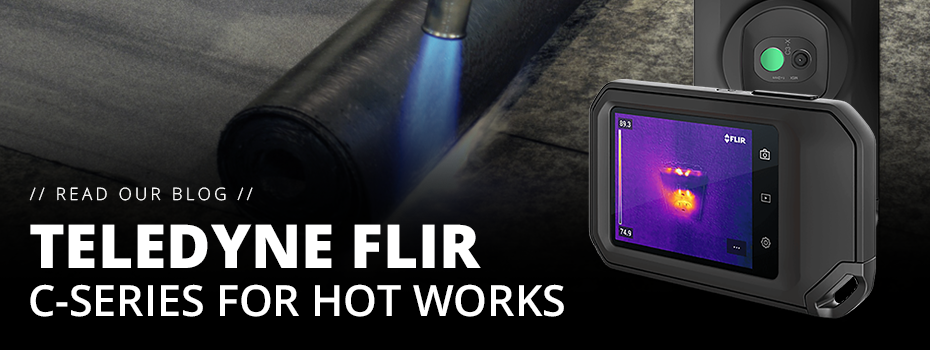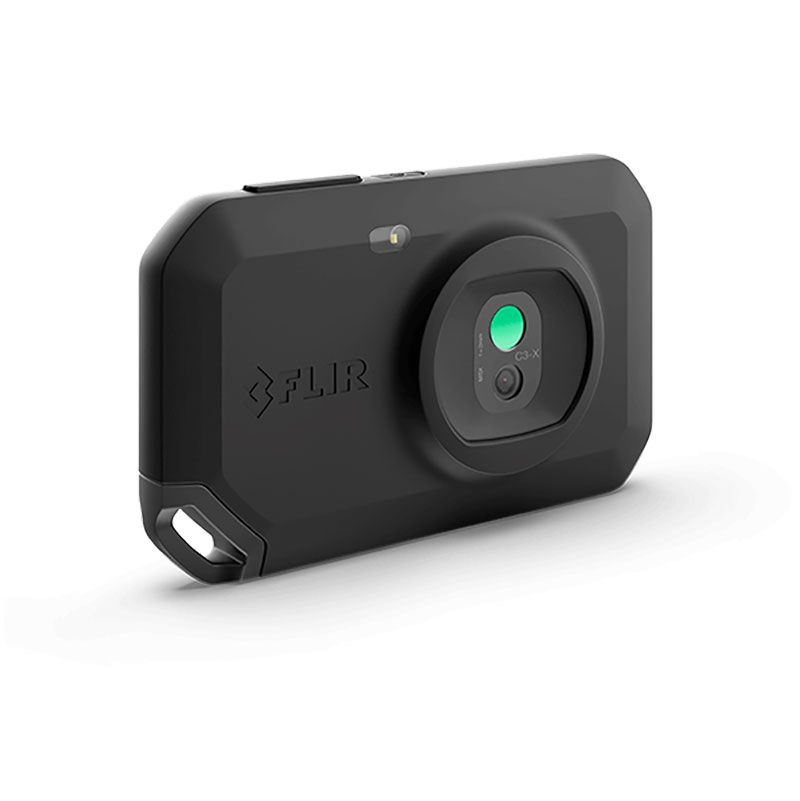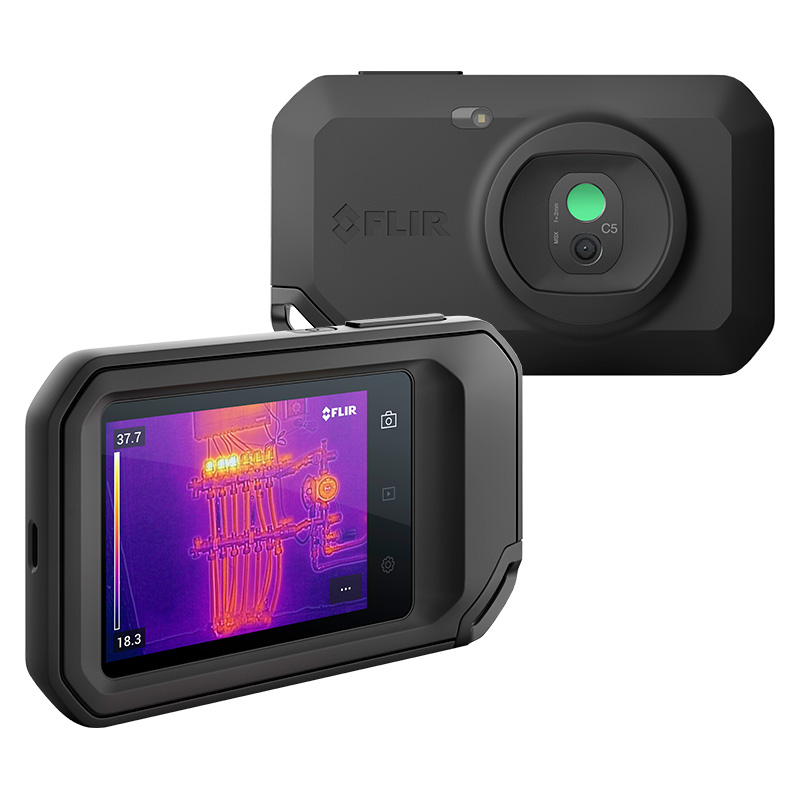
According to Home Office statistics, of the 1587 construction fires attended by fire crews in England between January 2015 and March 2019, 28% were caused by hot works or other heat sources.[1] Zurich advises that hot works account for 15% of the total costs associated with fires in industrial and commercial properties across the UK.[2] Between 2016 and 2018, Zurich received £250-million worth of claims pertaining to hot works.[3]
Hot works fires pose a significant risk to life, buildings, and businesses. Zurich recommends that contractors and manufacturers always follow the NFRC’s Safe2Torch guidelines and use thermal imaging cameras, such as Teledyne FLIR’s C-series (including the FLIR C3-X and FLIR C5), to limit risk factors.
Quick Links
- Find Hotspots
- Monitor Cooling
- Teledyne FLIR C-Series Thermal Cameras Key Features
- Conclusion
- Further Information
Find Hotspots
An integrated 640px x 480px digital camera means the Teledyne FLIR C-series can capture digital as well as thermal images. Moreover, the Teledyne FLIR C-series’ MSX (multi-spectral dynamic imaging) function means IR and visible-light images may be combined to produce a thermal picture with the detail of a digital image. This improves the ease and certainty with which contractors can locate obvious and hidden hotspots. FLIR’s C3-X and C5 Thermal Cameras are suitable for inspecting roofs for hotspots before, during and after using a gas torch to apply torch-on membranes or to dry roofs. Detection of hotspots means the contractor can implement an alternative torch-free method, such as using a hot air gun, before there is a risk to life or property.
Monitor Cooling
Often roofs need to be completely dry before they will accept new waterproofing. The most effective method of drying roof decking is to use a gas torch. In addition to identifying hotspots, the Teledyne FLIR C-series can monitor the cooling of the substrate after torching. This allows contractors to ensure that new waterproofing is only applied when it is safe. The FLIR C3-X and C5 are radiometric thermal cameras: they provide both visual and quantifiable methods of monitoring roof temperatures. Radiometric thermal images capture a heat map of the area and assign a temperature to each pixel. The thermal palette allows the contractor to see immediately which areas of the roof are the hottest and which areas have cooled; while selecting a pixel provides the exact temperature for that spot.
Teledyne FLIR C-Series Thermal Cameras Key Features
- Economic: from £469 (ex VAT)
- Simple-to-use with intuitive menus
- Compact with a bright, 3.5”, touchscreen display
- Radiometric IR images with a 128px x 96px/ 160px x 120px resolution (model dependent)
- 5MP Digital camera
- MSX
- Temperature range: -20˚ C to +300˚ C/+400°C (model dependent)
- Multiple thermal palettes
- LED spotlight
- USB connection for transferring files and streaming videos
- Wi-Fi interface for storing images on the FLIR Ignite Cloud
Conclusion
The FLIR C3-X and FLIR C5 are cost-effective, compact, and comprehensive thermal imaging cameras that can be used to ensure compliance with roofing regulations and Safe2Torch, thereby saving lives, property, and money.
Further Information
For more help and advice regarding the Teledyne FLIR C-series or any of our other thermal imaging cameras, please contact our Sales team on 01642 931 329 or via our online form.
In the meantime, browse our extensive selection of thermal cameras and Teledyne FLIR products.
[1] Terry Gangcuango ‘Zurich Shines Spotlight on Hot Works Fires’, last accessed 11 November 2021 <https://www.insurancebusinessmag.com/uk/news/construction-engineering/zurich-shines-spotlight-on-hot-work-fires-214827.aspx>
[2] Gangcuango, ‘Zurich Shines a Spotlight on Hot Works Fires’
[3] Zurich ‘Hot Works – Zurich Calls for Thermal Image Cameras to Combat Fires’, last accessed 11 November 2021 <https://www.youtube.com/watch?v=Uj3F6KidPXI>




